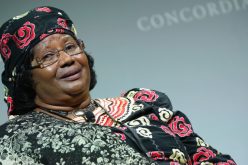 Child marriage has been missing from international development agendas. The time is ripe for that to change.
Child marriage has been missing from international development agendas. The time is ripe for that to change.
Around the world today, approximately 400 million women were married as children. This practice is particularly prevalent in certain parts of Africa. In Chad and Niger, for example, which have the highest child marriage rates in the world, 70% of women were married off before their 18th birthday. According to some estimates, between 10 and 14 million child brides are married every year – in spite of international conventions effectively banning the practice.
Child marriage has existed for a long time in a number of cultures. But at the same time, many see it as an infringement of girls’ human rights, the practice can contribute to societies’ under-development, and getting married young often involves having children young, which can be a serious threat to girls’ health.
Despite all these concerns, however, many involved in the struggle to eradicate the practice believe not enough is being done.
The dangers of child marriage
Child marriage is believed to problematic for several reasons. According to Lakshmi Sundaram, Global Co-ordinator of Girls Not Brides, the practice is “a pretty gross human rights violation”. “This practice is denying millions of girls their opportunity to thrive”, she says. Indeed, getting married as children denies girls an education and the ability to determine their own paths.
This is individually tragic, but this individual under-development can also lead to broader societal under-development. Once girls get married, Sundaram explains, “they don’t have access to economic opportunities, which traps them, their children and their families in a cycle of poverty”. These struggling families are then also more likely marry off their own young girls. “In many cases you can get a higher bride price or pay a smaller dowry if the bride is very young”, says Sundaram. The result is that “you end up with a situation where it is generally poor families that have to marry off their girls”. And so the cycle continues.
Child marriage can also lead to health dangers. Getting married young often means having children young, which can have serious complications. “If you are in a situation where there are 13-year-old girls giving birth, that’s just not right”, says Sundaram, “children are giving birth to children and their bodies are not ready for this”. This endangers young mothers’ lives as well as that of their babies. “A child of a child bride is much more likely to die before the first birthday than a child of an older mother”, Sundaram adds.
Education, education, education
In an attempt to bring greater attention to child marriage, Girls Not Brides and the Young Women’s Christian Association (YWCA) brought the issue to Washington last month at a conference on education in the developing world, headed by World Bank President Jim Yong Kim, UN Secretary-General Ban Ki-moon, and United Nations Special Envoy for Global Education Gordon Brown.
It was crucial to include child marriage in the debate, argues Nyaradzayi Gumbonzvanda, Secretary-General of YWCA, “because education is one sure way to prevent child marriage”.
Firstly, education gives girls a higher earning potential, which may render a bridal price or dowry less attractive. Secondly, as Sundaram points out, it gives girls the opportunity to learn the “life skills and information related to their own health and to keep themselves healthy”. And finally, there is the issue of perception. “When someone is in school, there is the feeling they are a child because children go to school”, says Sundaram. “Creating that culture where teenagers are going to school re-emphasises this idea they are children.”
Divorcing a dangerous practice
The inclusion of child in April’s international conference is a promising step, but Sundaram, admits that the problem is “not getting better at the rate it ought to be getting better”.
Arguably, part of the reason for this relatively slow progress is the inability, or perhaps the fear, of donor governments to take a firm stance on an issue that involves “culture and taboo” and “other people’s traditions and practices”, according to Sundaram. However, Gumbonzvanda insists that sensitivity to “cultural imperialism” should not be an excuse for inaction.
One way in which the practice could be tackled is through the post-2015 development framework which will replace the Millennium Development Goals in which child marriage and the rights of adolescent girls were noticeably missing. As the content of the post-2015 goals are discussed, the time is ripe for child marriage to be reconceptualised as a cross-cutting issue on development agendas – one that affects education, economic output and health. Once this outlook is embraced, it will be apparent that ending child marriage is in everyone’s interests. Furthermore, as Sundaram stresses, it is important to “make sure that it is not just this year’s issue, but something that does result in really significant change”.
On this note, Gumbonzvanda is optimistic that change is possible with the right drive. “If the families, if the communities, if the government, if men and women around the world roll up their sleeves and say ‘this is unacceptable’, we can have the necessary legislation, we can get more investment into girls’ education, we can address the issues of cultural and societal values that perpetuated this crisis” she says. “We can end child marriage, and we can end it in a generation”.
THINK AFRICA










